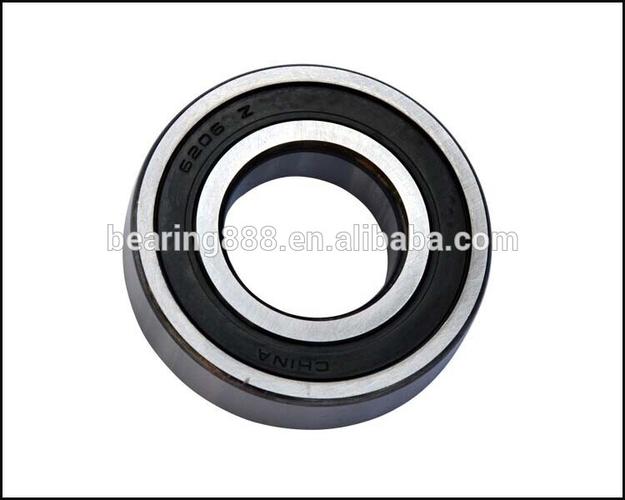Ceramic Bearings Guide: Costs, Types, and Applications for Industrial Use
Ceramic bearings are revolutionizing industries with their exceptional durability, high-speed capabilities, and corrosion resistance. Unlike traditional steel bearings, ceramic variants use silicon nitride or zirconia balls, offering lower friction and longer lifespan. This article explores key aspects like pricing comparisons, hybrid designs, industrial applications, and performance advantages over metal alternatives.
Table of Contents
1. Ceramic Bearings Price Comparison 20232. Hybrid Ceramic Bearings Benefits
3. Industrial Ceramic Bearing Applications
4. High-Speed Ceramic Bearing Performance
5. Ceramic vs Steel Bearing Analysis
1. Ceramic Bearings Price Comparison 2023

Ceramic bearings typically cost 3-8 times more than steel counterparts due to advanced manufacturing processes. Full ceramic bearings range from $50-$400 depending on size and precision grade, while hybrid versions (steel races with ceramic balls) cost $25-$150. Industrial-grade models with ABEC-7 ratings command premium pricing. Factors affecting cost include material purity (silicon nitride vs zirconia), lubrication requirements, and load capacity. Despite higher upfront costs, ceramic bearings offer 5-10x longer service life in harsh environments, making them cost-effective for continuous operations.
2. Hybrid Ceramic Bearings Benefits
Hybrid ceramic bearings combine steel races with ceramic balls, balancing performance and affordability. They reduce friction by 40% compared to all-steel designs while maintaining 80% of full-ceramic durability. Key advantages include 30% higher RPM tolerance, reduced heat generation, and compatibility with extreme temperatures (-40°C to 300°C). These bearings excel in electric motors, dental drills, and food processing equipment where electrical insulation and chemical resistance are crucial. Maintenance cycles extend 3x longer than standard bearings, significantly lowering total ownership costs.
3. Industrial Ceramic Bearing Applications
Industrial ceramic bearings dominate high-performance sectors: aerospace actuators withstand 15,000 RPM continuously, semiconductor robots achieve micron-level precision, and wastewater pumps resist saltwater corrosion for 20,000 hours. Medical MRI machines utilize their non-magnetic properties, while wind turbines benefit from reduced lubrication needs at 100m heights. Recent advancements enable use in 800°C furnace conveyors and cryogenic storage systems. Case studies show 92% maintenance reduction in paper mills and 17% energy savings in HVAC systems using ceramic bearings.
4. High-Speed Ceramic Bearing Performance
Ceramic bearings achieve 1.5-2x higher maximum speeds than steel equivalents due to 60% lower density and superior roundness. In laboratory tests, silicon nitride bearings sustained 250,000 RPM without lubrication failure. Key performance metrics include 80% lower thermal expansion and 50% reduced vibration levels. High-speed applications include CNC spindles (40,000 RPM), turbochargers (150,000 RPM), and dental handpieces (400,000 RPM). Proper installation with ceramic-compatible greases like Kluber Isoflex NBU 15 is critical for maintaining these extreme performance parameters.
5. Ceramic vs Steel Bearing Analysis
Comparative studies show ceramic bearings outperform steel in 4 key areas: lifespan (3-10x longer under load), speed capacity ( 40-60%), corrosion resistance (immune to pH 2-12 environments), and temperature tolerance ( 200°C). Steel bearings maintain advantages in shock load resistance (30% higher) and initial cost. Hybrid designs bridge this gap, offering 70% of ceramic benefits at 40% cost. Industry data reveals ROI thresholds: applications requiring >8,000 operational hours/year justify ceramic bearings through reduced downtime and replacement costs.
From price comparisons to performance benchmarks, this guide covers essential factors for selecting ceramic bearings. Whether optimizing high-speed machinery or solving corrosion issues, understanding these 5 key aspects helps engineers make informed decisions. The following sections provide technical specifications, installation guidelines, and case studies demonstrating real-world efficiency gains across industries.
Ceramic bearings represent a transformative technology for demanding industrial applications. By combining cutting-edge materials science with precision engineering, they deliver unmatched performance in speed, durability, and operational efficiency. As manufacturing costs decrease and hybrid options proliferate, these bearings are becoming accessible solutions for mainstream industrial use while maintaining superiority in extreme environments.




 13869596835
13869596835